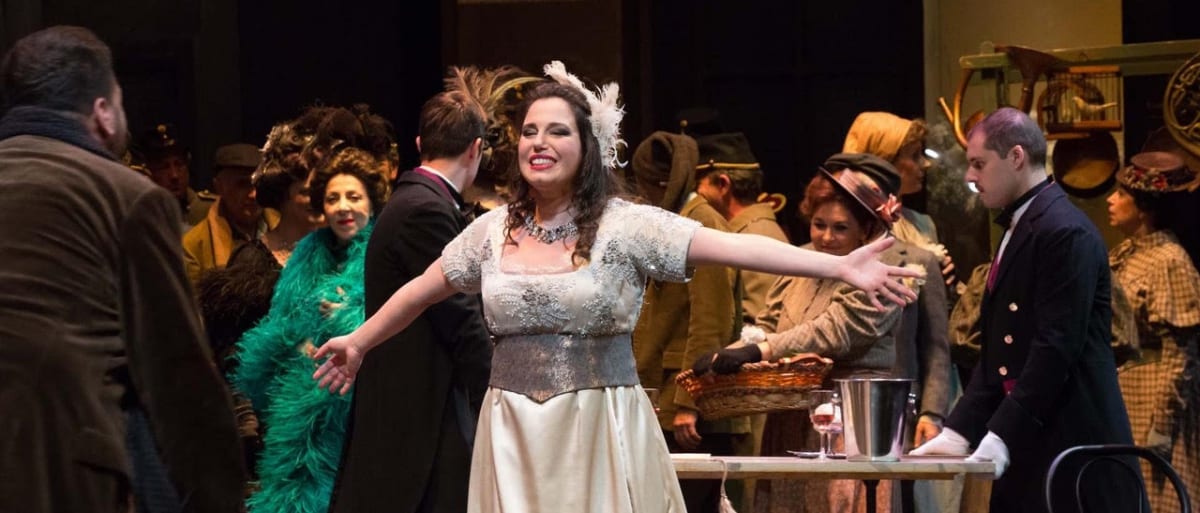There are many reasons why Puccini’s La Bohème is one of the favourite opera of every theatre in the world: the perfect balance of tragedy and comedy, the portrayal of youth and its frailty, the joy and fallacy of romantic love, the strikingly beautiful arias that punctuates the opera without interrupting the flow of action; besides, it is easy to follow and to engage with, the ideal opera for a newbie. La Bohème is also a clear example of Verismo, the prevalent cultural movement in Italy at that time, where the artists focus on the drama of the real life rather than choosing mythological or historical subjects. This opera is set in mid nineteenth-century Paris: all starts in a cold room in the first act, with four young artists struggling to go by in an atmosphere of joyous insouciance. After a lively depiction of Parisian life in the second act, in the third act the dreams and hopes of the main characters clash with the harsh reality and their true character comes out. In the fourth act, we are back to the same room of the first act, with the same camaraderie, but everything has changed. The music follows this transformation with a wide use of leitmotifs that recall the first act but here the insouciance is replaced by melancholy, nostalgia and tragedy in the end.

The Wagnerian influence in the orchestral composition is very evident: Puccini had a natural gift for opulent sounds and the nuances of the score were greatly interpreted by Daniel Oren, the real star, conducting the orchestra of Teatro Massimo with great dynamism, attention to musical expression and without overpowering the singers.
This production under the direction of Mario Pontiggia follows the opera spirit in the exaltation of youth and freedom. The beautiful stage design and costumes by Marcello Zito evoke Parisian atmosphere: the ironworks, the art nouveau gazebo, a kiosk. There is an element of originality in the atmosphere of the fourth act where all the characters wear white clothes, perhaps hinting at the upcoming spring or symbolising some kind of purification through suffering. However, on the overall the production is blatantly traditional, although it must be said that La Bohème is so bounded to Parisians atmospheres, places, and even objects (much more than, as an example, La Traviata where everything happens behind closed door and Paris is just a note of colour) that it allows limited space to experimentation.
Amongst the main singers Marcello’s interpretation by Vincenzo Taormina was an outstanding one, thanks to an expressive voice and a great stage presence. Valeria Sepe gave us an intense Mimi; she possesses a powerful voice that engages the public but she needs some honing and better control. Stefan Pop in the role of Rodolfo gave us moments of intense lyricism thanks to a brilliant timbre and a great technique, although he needs to work more on the psychology of the character. Jessica Nuccio was an energetic and peppery Musetta, Christian Senn and Marko Mimica interpreted with style and panache respectively Shaunard and Colline.
On the overall, the performance was compelling and enjoyable and was warmly received by the public.

